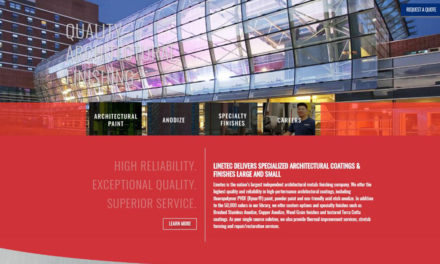WASHINGTON, DC, December 12, 2017 – Durable, high quality wood buildings are the new standard for high performance construction. Aligning the construction efficiency and environmental benefits of modern wood technologies with passive design principles can create energy-efficient and carbon neutral buildings that reduce energy bills and benefit architects, developers, owners and cities.
Mass timber products offer design flexibility, which can be used in place of steel and concrete in applications to enhance passive design for schools, multifamily housing, healthcare facilities and office buildings. A solid wood product, mass timber’s thermal properties make it a natural option for helping to meet Passive House’s space heating and cooling requirements.
“We must consider more than just how energy efficient a building is – we also need to look at the energy required to actually build it,” explained Stas Zakrzewski, Principal at ZH Architects. “While typical Passive House Design certifications don’t necessarily focus on this aspect, decreased energy expenditure throughout the construction process is a byproduct of building with wood. Unlike concrete and steel, wood products require very little energy to produce and are a renewable resource – something we should all be prioritizing.”
“The Passive House Building Standard is the world’s most energy efficient certification and can dramatically reduce our carbon footprint,” said Michelle Apigian, practice and sustainability leader at ICON Architecture. “Because of wood’s ability to sequester carbon, standard wood construction methodology with careful emphasis on the critical components of a Passive House project can result in an incredibly cost-effective, low-carbon development.”
There are a number of benefits to incorporating wood into passive design structures:
- Architect: Wood allows for simplified high-performance detailing, as well as a high level of quality control. Furthermore, walls are more efficiently built leading to a faster construction timeline.
- Developer: The use of wood as a building material adds economic value at little cost, while creating an attractive and unique selling point. Wood structures are also low-maintenance and durable, and will retain relevancy in a new era of modern construction.
- End User: Wood as both a structural and finish material helps achieve high levels of occupant comfort and well-being, as well as an energy-efficient building envelope that can help reduce energy consumption and thus reduce energy bills.
- Environment: Wood structures offer low embodied and operational energy, as well as lower carbon emissions than steel or concrete buildings.
To learn more, take our new AIA-accredited webinar on-demand, “Successful Strategies for Profitable, Carbon-Neutral Designs Using Passive House and Mass Timber,” where you will learn the important characteristics of wood that allow for energy and cost-efficient design, and key strategies for taking advantage of these characteristics.
reThink Wood continuing education units are ideal for design professionals (architects, engineers and building designers). Additional wood resources and research can be found on the reThink Wood Research Library and at www.rethinkwood.com.
About reThink Wood
reThink Wood represents North America’s softwood lumber industry. We share a passion for wood and the forests it comes from. Our goal is to generate awareness and understanding of wood’s advantages in the built environment. Join the reThink Wood community to make a difference for the future. Be part of the conversation to “rethink” wood use, address misperceptions and enhance awareness of wood’s benefits and choices. Learn more at reThinkWood.com.



